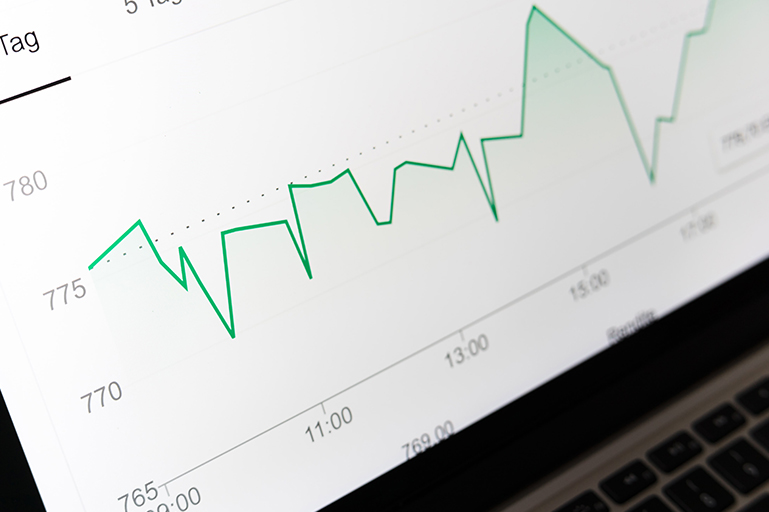How to Calculate Social Media ROI

Even back in 2017, it was projected that social media spending would take up 16% of the total digital ad market. And while the number seems considerable, rarely do people understand what it actually means. There are dozens of great methods and tools to measure the effectiveness of the social media ad campaigns, yet business people still get lost at what these metrics show.
Yes, everyone knows that it is possible to calculate the number of clicks or the number of likes under a post. But what does it mean? Is it good? Is it bad? Is it profitable? These are the questions asked daily by the business owners. And this is what ROI is about.
ROI stands for Return On Investment or, to put it simply, how much profit you get from investing in something. For example, Facebook earns almost $20 per user on average. This is the number that is tangible and understandable for business people. But what about other reasons, is there any sense in calculating ROI for social media?
Yes!
Talk means nothing since anything can be said and written. But numbers don’t lie. Numbers can persuade stakeholders and investors about the value social media brings to a company, and get even greater financial support for the development of your next social media marketing campaign. Here are the top reasons how the vital calculation of social media ROI can help:
- Define the importance of social media to the company members/stakeholders/investors/anyone who cares.
- Understand the true impact of social media on business development.
- Determine the effectiveness of your budget distribution.
- Delimit the weak spots and work on their improvements.
- Understand/establish your target audience to adjust marketing efforts for its needs.
So now let’s take a look at how to calculate your social media ROI.

How to calculate social media ROI?
Calculation means formula. And below is the basic formula of social media ROI.
$ Profit : $ Investment x 100 = SM ROI (%)
Profit is what you actually get after social media marketing spending. In fact, it equals Total Earnings — Costs/Investment or the total sum of money you received from a campaign without the investment you made initially.
Investment is the cost of your company’s social media marketing campaign.
Yes, sometimes it is quite tough to monetize, for example, the number of mentionings you received or the number of clicks on a particular button. However, it all depends on your objectives — Key Performance Indicators (KPIs). So let’s move on to the actual process of calculation. Below you will find a simplified step-by-step guide on doing the math and defining your profits.
1. Identify your social media objective(s) = KPI(s)
Social media allows businesses to reach a wide spectrum of objectives: from the basic “increase the sales” to “improve brand awareness” to more precise “attract greater organic website traffic.” The objective or KPI is what you would like to reach by implementing a particular social media strategy into your general marketing plan.
For instance, if your goal is to increase the number of leads on your website, then your social media campaign might include such tangible aspects as the addition of website links to your posts, ebook download references, motivation to subscribe to your newsletter, etc.
2. Set the goals
After you have identified what you would like to reach, you need to understand how and when you will be doing it. The latter two represent your goals. Keep in mind that goals must be very specific (not just increase sales but rather increase the number of sales from the landing page by 10%). Besides the detailed identification of the goals, make sure that they are reachable (10% instead of 99%), relevant (improve brand awareness among target audience by 10% rather than letting the world know you exist), and timely (reach the goal in 6 months).
Here are a couple of goals that might give you an idea as to what to think of:
- Drive XX number of leads for a quarter (to grow conversions);
- Increase landing page conversions by XX% (for the same goal).
3. Track the goals
After the goals are set and the campaign is running, you need to track the efficiency of your endeavors. Tracking is relatively the easiest part of calculating your social media ROI. In the current era, there are so many tracking tools to evaluate the effectiveness of a particular goal or process that everyone would be able to find the desired solution.
The most basic tools include Google Analytics or solutions inside social media platforms which also collect data about the sales, downloads, clicks, views, likes, and shares of a business page and its posts. Here is the list of tracking tools that may come in handy for any of your needs:
- Google Analytics
- LikeAlyzer and Facebook Insights (for Facebook)
- Twitonomy (for Twitter)
- Tailwind App (for Pinterest)
- Google URL Builder
- Sprout Social
Each of these tools measures something else. But the general idea is to define the amount of your social traffic and the channels that drive the most traffic.
4. Track your expenses
After you get the tracking data about the results of your social media campaign, it is time to define how much it cost you initially. This is the Investment part of the formula stated at the beginning of this article. Remember that investment of time and effort is still an investment that cost you money as well. So do not forget to include this data into your calculations as well.
- Time: If you are working in a company, you get an hourly rate. The same practice you need to apply to your ROI formula calculations. Think of how much time you spent on working with the social media campaign and multiply it by the hourly rate you have. Your time is valuable; whether you’re a solo business or you have a social media marketing team on deck.
- Content: Content is also developed in the process of a campaign either by a professional copy- or content writer or by one of your employees. Again, consider the scenario where a third party is doing this service for you, and calculate how much money you would have spent for the amount of content you need. In case you are the only one developing everything, you can transfer this investment into the aspect of time expenses.
- Tools: Some tools like built-in analytics on Facebook or Twitter are free. Yet, many professional analytics and SMM solutions require some investment. Remember to include these expenses into your sheet as well. But keep in mind that you need to take into account only the cost of the software for a particular period of time rather than a yearly subscription.
- Ad costs: Facebook Ads and promoted ads like paid Tweets do cost some extras. This is yet one more expense to be added to your investment bill.
5. Finalize your calculations
At this moment you have your tracking data of how much you have spent on your campaign and how much results it has delivered to you. With this data, you can come back to our initial social media ROI calculation formula and do the simple math.
Take a look at an example below to better understand the calculations you need to make.
Example
Objective: A company called “Sparrow” wants its customers to buy its Guide.
Goal: A company wants its customers to download the free sample of their Guide.
Tracking: It checks how many subscribers it has on Facebook since the more people, the greater the ROI. It then carefully reviews all its external links to identify which ones are useless and which ones bring new leads that are further transformed into customers. Then the conversion rate is calculated.
Monetizing/calculating: Let’s say that only 1 in 10 online users is converted into a customer. The average amount of money spent on a customer is $100. So the value per the download of a Guide’s free sample is $10.
Now, the tracking data shows that there were 1000 downloads made via Facebook and 1,600 via Twitter. So the benefits for Facebook => 1000*$10 = $10,000 and for Twitter => 1,600*$10=$16,000.
The labor costs determined that Facebook required 200 hours of work and Twitter 250 hours. As a result, “Sparrow” spent $30/hour*200=$6,000 for the Facebook social media marketing campaign and $30/hour*250=$7,500 for Twitter.
As a result, Facebook ROI = ($10,000-$6,000)/$6,000*100 = 66,7%.
Twitter ROI = ($16,000-$7,500)/$7,500*100 = 113,4%
While both ROI percentages are above 0, the maths explicitly demonstrates that investment in Twitter social media campaign brings greater profit and return, hence it is more valuable.
To sum up
The basic mathematics from the 5th grade allows huge businesses to understand the relevance of their social media campaign, its weak and strong sides as well as elements that must be forgotten forever. The easy calculation of the social media ROI allows getting the insight view into your marketing process and success. It helps to identify the earnings and costs of every social channel used and hence eliminate the rudimental efforts that still cost money. Calculation of social media ROI helps to adjust social media campaigns to the current needs of the market and cutting down the ineffective strategies.
